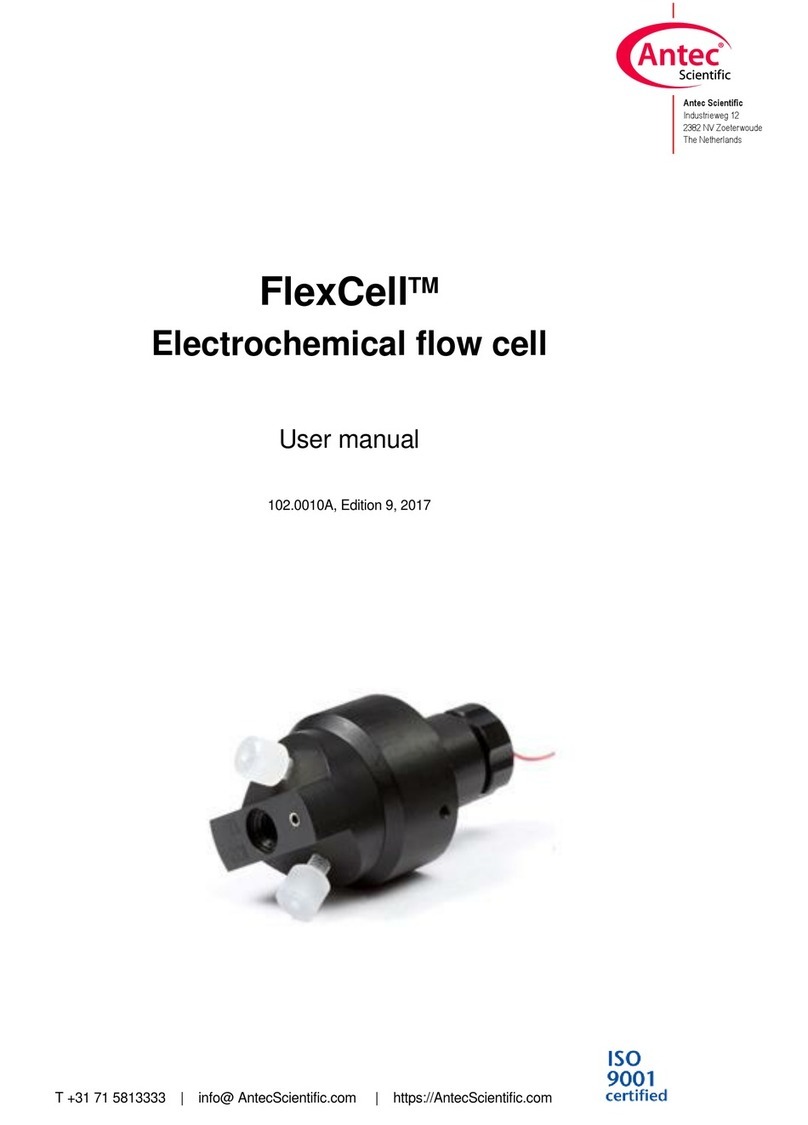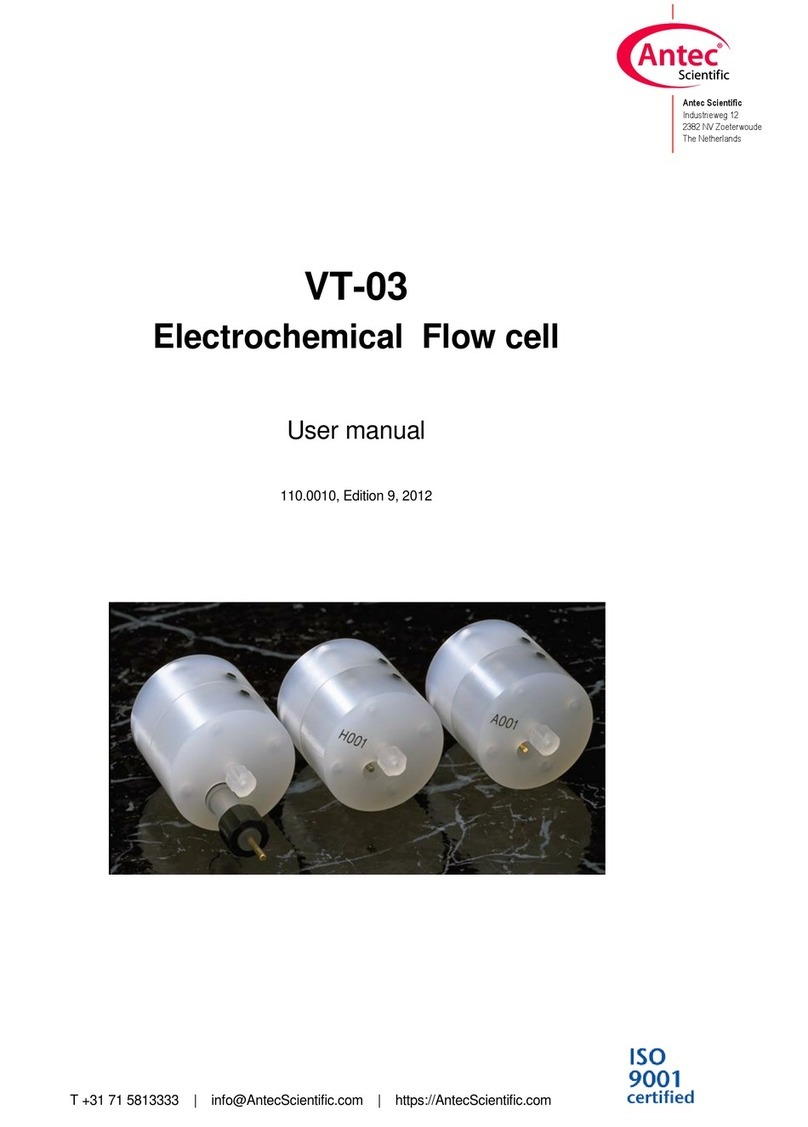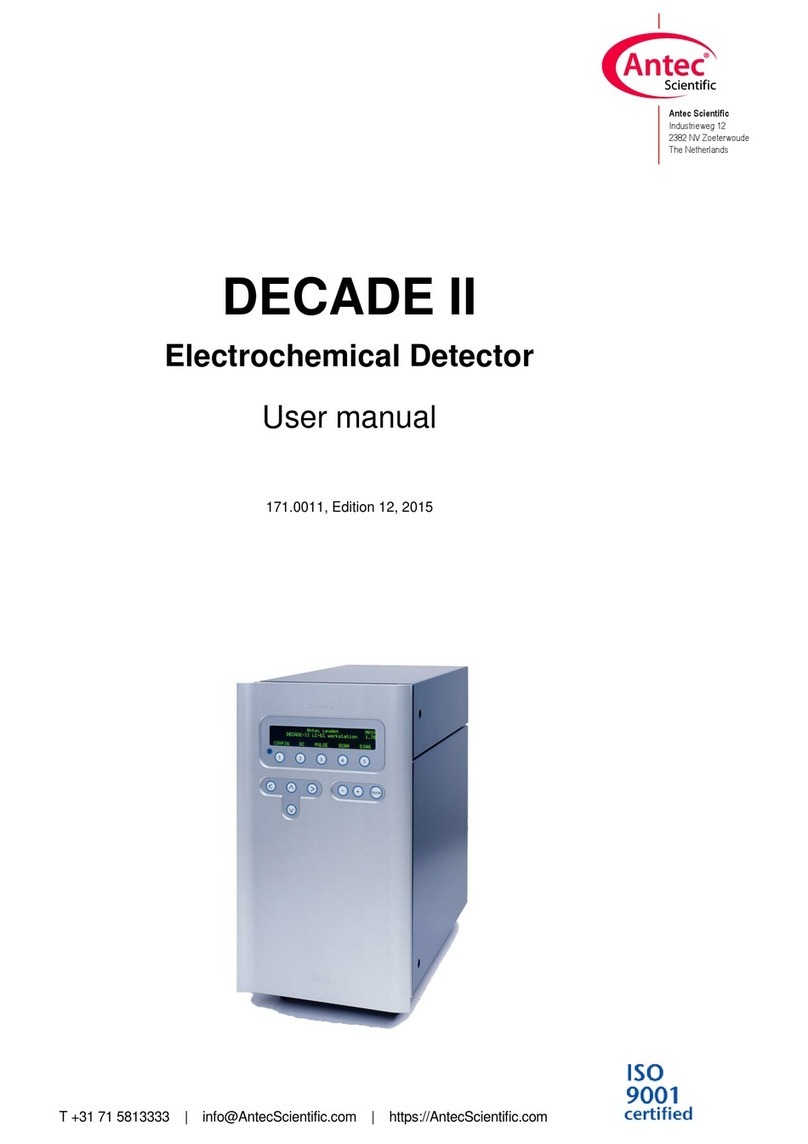CHAPTER 1 The electrochemical flow cell 9
C H A P T E R 1
The electrochemical flow cell
Introduction
Congratulations on your purchase of the SenCellTM, a new electrochemical
flowcell for (U)HPLC with ECD. The SenCell has several unique features
(Patent Pending) like a stepless adjustable working volume (spacerless
concept) and toolless assembly.
The SenCell is available with a glassy carbon working electrode (WE). The
SenCell design eliminates the use of plastic/metal spacers. The working
volume of the electrochemical cell can be stepless adjusted without opening
the cell bymeans of a special key, allowing easy optimization of the detection
sensitivity for anyLC application. The working volume can be adjusted
between roughly 0 –300 nL (based on a 2 mm diameter WE). As a standard,
the salt bridge Ag/AgCl reference electrode is advised. For special
applications the HyREF™reference electrode is available. A third reference
electrode is the in situ Ag/AgCl (ISAAC™).
Fig. 1. Left side: assembled SenCell electrochemical flow cell with ISAAC
inlet block (green). The upper part, the inlet block, is separated from the
working electrode block. Right side: SenCell WE block. .
The SenCell has been developed for ultra-trace analysis in standard,
microbore and capillaryLC-EC. After extensive testing it was established that
the confined wall-jet configuration gave the very best results. In addition it
was found that the electrode materials qualityand the finishing of the
electrodes in the flow cell are decisive factors for the performance of an EC
detector.While competitive designs usually deteriorate when in use, this flow































